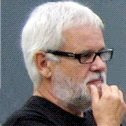 There has been an inn on this site since 1720, and possibly as early as 1713. Joseph Hyde was the first recorded landlord, mentioned in 1726, and the inn is first referred to as The Greyhound in 1727, and again in 1729 when parish registers record the burial of Joseph Hyde in St Mary's Church, Lewisham. The oldest part of the building, made of timber, was demolished several years ago. Its outline can still be seen at the side of the Greyhound, from the car park.
There has been an inn on this site since 1720, and possibly as early as 1713. Joseph Hyde was the first recorded landlord, mentioned in 1726, and the inn is first referred to as The Greyhound in 1727, and again in 1729 when parish registers record the burial of Joseph Hyde in St Mary's Church, Lewisham. The oldest part of the building, made of timber, was demolished several years ago. Its outline can still be seen at the side of the Greyhound, from the car park.The inn was built on the south eastern edge of Sydenham Common. The Common, now covered by Upper Sydenham and much of Forest Hill, was used by local people for grazing animals, gathering wood, recreation, hunting and holding fairs. The earliest inn faced the common (looking across Spring Hill), and had unbroken views to the summit of Sydenham Hill. Two tracks crossed the common, one leading to Dulwich (now Westwood Hill) and the other towards London (now Kirkdale).
In about 1640 mineral springs, with alleged healing properties, were discovered on Sydenham Common, in the present Wells Park Road and Taylor's Lane area. Demand for the water increased and several wells were sunk to ensure adequate supplies. Their popularity increased and one visitor complained about the "rabble of Londoners" who came to visit the wells. Visitors were accused of mixing the water with "brandy or other strong liquors" (supplied by local inns), and then blaming their hangovers on the water! Wealthier visitors to the Sydenham Wells would have required lodgings and this could have been one reason for building the inn. The popularity of the Wells peaked with a visit from George III (in about 1760) but then declined. The wells were filled in. During the late 19C the last remaining well was described as "a dirty pool and the water very nasty".

The Greyhound Inn, like inns at Dulwich, Streatham and Croydon with the same name, was used as a meeting place for local hunts. Greyhounds were bred for hunting, using speed and keenness of sight. During the 18C and until 1812 or later, the Old Surrey Hounds (the fictional Jorrock's pack) would meet at the Greyhound. The Old Surrey hunted an area that covered Brockley, Sydenham, Dulwich, Peckham and Croydon. Sydenham and Forest Hill were particularly noted during the 18C for having a large fox population.
Trade at the Greyhound Inn was boosted with the building of the Croydon Canal, which operated between 1807 and 1836. The canal connected Croydon with the Thames and followed roughly the line of the present railway track from New Cross Gate to Sydenham and beyond. The inn provided refreshment for the 'navvies' who built the canal and was also a resting place for those who used the canal for work or recreation.
The poet Thomas Campbell lived on Peak Hill between 1804 and 1820. He regularly used the Greyhound and apparently entertained some of his distinguished visitors (who included Sir Walter Scott, Lord Byron, George Crabbe and Sarah Siddons) at the inn. Sir Charles Bell (a Scottish surgeon) writes of an evening spent with Campbell at the Greyhound when the poet returned home "not drunk, but in excellent spirits". Other accounts suggest that there were occasions when he had to be helped home to bed.
An early painting shows pleasure boats moored against a landing stage near the inn, known as Doo's Wharf. Certainly in 1807 the inn had a boat and boat-house, as the landlord was accused of not allowing his boat to be used to rescue a man who had fallen into the canal reservoir and drowned. The man had been trying to retrieve a duck he had shot.
A major change to the character of the area resulted from the passing of the Enclosure Act of 1810. This proposed the enclosure of all common land in Lewisham, except for Blackheath. From about 1820 what had been open common, from the Greyhound to the top of Sydenham Hill and from Westwood Hill to Honor Oak Road, was fenced in and gradually built over.
The Croydon Canal failed and in 1836 the London & Croydon Railway Company bought its assets. They built a railway, roughly along the line of the canal, which opened in 1839. A station, almost adjacent to the inn, gave yet another boost to the Greyhound.
Sydenham was becoming a thriving and populous suburb and there was obviously a need for a more modern and prestigious inn. In 1873 an application was submitted to the Board of Works by Abraham Steer, a Norwood builder, to add an extension to the southern side of the building, fronting on to Kirkdale. Much of the interesting detail of the inn dates from this time.

The character of the Greyhound Inn has undergone a number of changes over more than 270 years. It has, at different times, provided strong refreshment for visitors to Sydenham Wells, been a meeting place for local huntsmen, refreshed those boating on the Croydon Canal, played host to Georgian literati and quenched the thirst of clerks returning from their offices in the City.

No comments:
Post a Comment